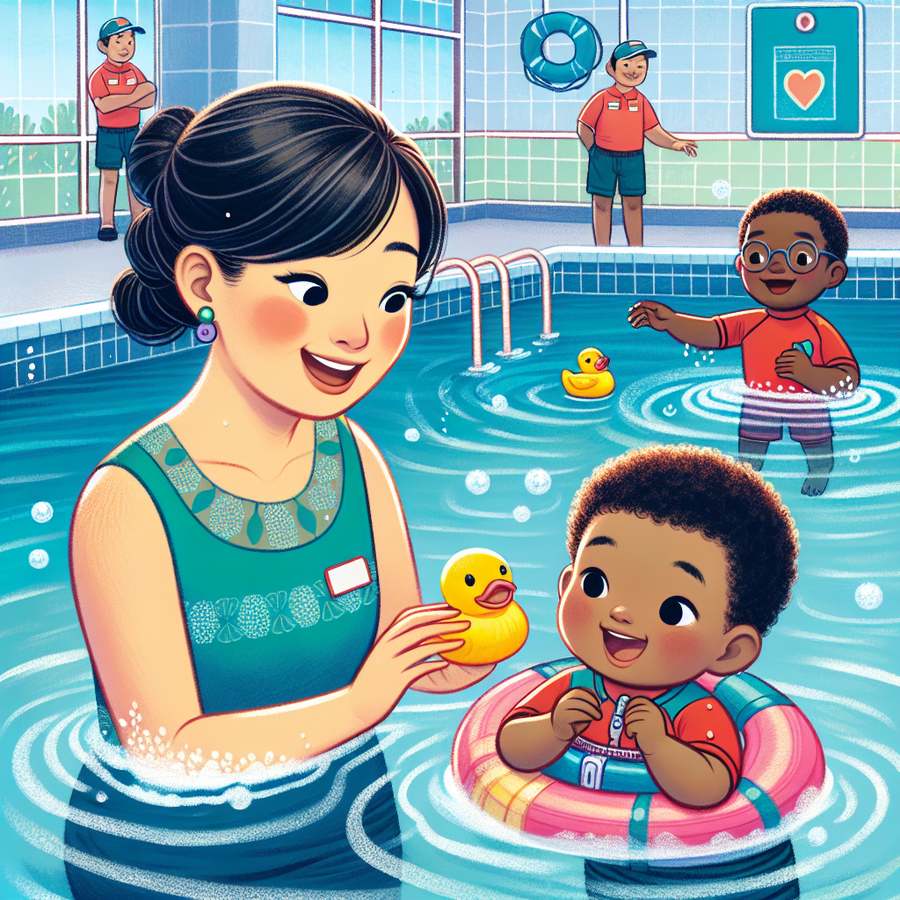Introducing your baby to swimming: Best practices can be an exhilarating journey for both you and your little one. It’s not just about splashing around; it’s a crucial step towards building your baby’s confidence in water, enhancing their motor skills, and ensuring their safety. This guide will walk you through the essential steps to make your baby’s introduction to swimming a safe, enjoyable, and enriching experience.
Understanding the Right Age for Swimming
One common question many parents have is, “At what age can my baby start swimming?” The American Academy of Pediatrics recommends that children start swimming lessons by the age of 1. However, introducing your baby to water in a more casual, gentle manner can begin as early as a few months old. It’s crucial to ensure that your baby is ready and that the conditions are safe for this initial water exposure.
Before starting, consider your baby’s health and comfort levels. Babies who have reached developmental milestones such as being able to hold their head up and show curiosity about their surroundings may be more ready for water play. Consult with your pediatrician to discuss your baby’s readiness for swimming, especially if you have any concerns.
Creating a Safe and Comfortable Environment
When introducing your baby to swimming, ensuring a safe and comfortable environment is paramount. The water temperature should be warm, ideally between 90 to 92 degrees Fahrenheit, to prevent your baby from getting cold. A clean, well-maintained pool minimizes the risk of infections. For those initial experiences, consider using a shallow pool where you can easily hold and support your baby.
It’s also essential to equip your baby with the right gear. A comfortable, well-fitting swimsuit, a swim diaper, and a hat for outdoor swimming can make the experience more pleasant for your baby. Remember, never leave your baby unattended in or around water, not even for a moment. For more safety tips, visit How to Ensure Water Safety for Young Children During Summer.
Introducing your baby to swimming: Best practices
Start slowly and gradually increase your baby’s time in the water. Initial sessions should be short, about 10 to 15 minutes, to gauge your baby’s reaction and comfort level. Use this time to help your baby get accustomed to the feel of water on their skin, splashing gently to create a playful environment.
As your baby becomes more comfortable, you can introduce floating devices, but always stay within arm’s reach. Sing songs, play games, and use toys to make swimming a fun experience. Positive reinforcement and celebrating small milestones can greatly enhance your baby’s confidence in the water. For more tips on creating a positive and engaging environment, take a look at Guidelines for Baby’s First Bath: Temperature and Products.
In conclusion, introducing your baby to swimming is a journey that requires patience, preparation, and adherence to safety practices. By understanding the right age to start, creating a safe and comfortable environment, and engaging your baby with playful and positive interactions, you can ensure that swimming becomes a beneficial and enjoyable part of their early years. Remember, every baby is different, so follow your baby’s cues and progress at a pace that suits them. Here’s to many happy splashes ahead!
For additional resources on baby safety and development, explore topics such as Recognizing Signs of Food Allergies in Infants, Essential First Aid Skills Every Parent Should Know, and Preventing Choking Hazards: Safe Foods for Infants and Toddlers on our website.













